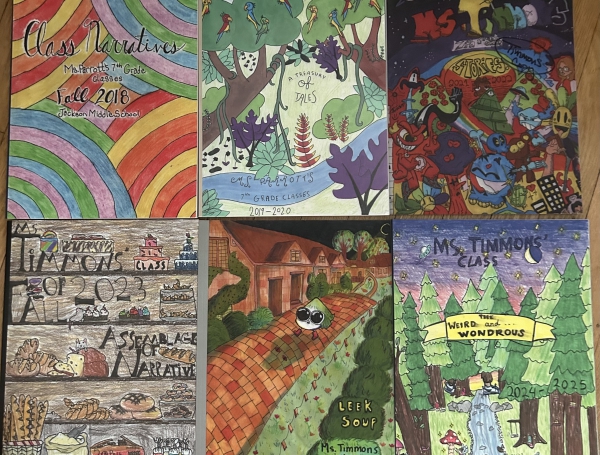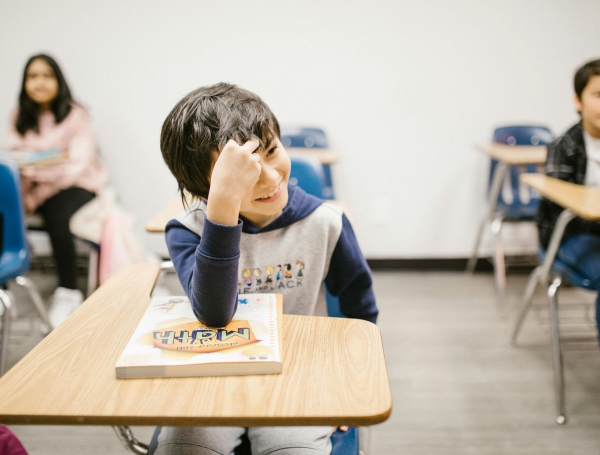

Do Multiple Ways Matter: Using Tech to Make the Connection
June 1, 2018

Let's be clear counting in small quantities is a skill most kids do naturally without much prompting or coaching needed, in fact, the region of the brain we use for counting includes the same portion of the brain that controls our fingers. Research suggests this may be attributed to the fact that our ancestors' first experience with numbers involved the fingers (Devlin, 2000). However, counting and calculations that go beyond our friendly fingertips are likely to result in errors.

When it comes to calculations students need strategies and not just one. Research suggests students will most likely use a particular strategy that they find to be a more efficient solution for a particular type of problem (Sieger & Jenkinds, 1989). Take for example the problem 6 x 42 . Students who have proficiency with breaking apart numbers can determine they will need to calculate 6 X 40 (240) and 6 X 2 (12) and mentally calculate the total of 252, but when these numbers become much larger 656 X 3245 the standard algorithm may be more efficient.
Common core mathematics shifts the focus from learning one-way and one-algorithm to understanding the underlying principles of a concept and applying multiple algorithms. This approach certainly lends itself to going deeper with math through multiple representations and ways of showing what you know.
The idea that students don't begin with the end in mind but begin with understanding and developing concepts is at the heart of the common core.

This shift in standards does not guarantee a shift in learning, this will only happen when teachers change the way they teach and curriculum evolves from focusing on some learners, to all learners in the classroom. From gifted and talented to students with special needs and English language learners, our approach and modes of instruction need to be flexible and supportive of our classroom population. Students need a variety of pedagogical approaches from number talks that support discussions of strategies and mental calculations, to manipulatives that allow students to construct models and make meaning of concepts.
So when parents ask, "Why can't they just memorize their multiplication facts" we can assure them that memorization does not promote understanding and automaticity will develop with practice. Elementary teachers should begin introducing concepts by building on what children already know and albeit this may be intuitive, it can lead to a deeper understanding of the concepts.
Rooting math in the lives of the students we teach can support building conceptual understanding as well as transfer the learning of math (number words, symbols and quantities) into their informal learning experiences such as the park, playing games and with friends. Take for example the idea of using arrays to introduce the concept of multiplication. Arrays are all around students but this knowledge needs to be brought forward during instruction and through practice. It's not enough just to talk about where you might see arrays kids also need to construct, discover, apply and identify. We should understand that what works for one kind of learner might not work for another. Woodward and Baxter found that students with disabilities in math tend to make significantly less growth in discussion-oriented classes (1997) than traditional ones.
Technology can be a great mediator to support, and challenge students with open-ended tasks and flexibility. It can also be useful to move from the abstract to the real-life connection.

Repeated addition is the knowledge students can start with to build an understanding of multiplication, but some students in your class might not have developed automaticity of their addition facts. Working with arrays that are highly contextualized and not just on a piece of graph paper can provide practice in addition while also introducing the concept of multiplication. In this video a second-grader works on a Google Slide presentation his teacher made to drag and drop cars into a parking lot.
If our ancestors first counting tool was their fingers then digital devices might be considered the cultural tools for our students today.
Using this digital lesson teachers can scaffold instruction and allow students to work at their own pace. While some students might work with benchmark numbers 2's, 5's, and 10's to construct an array, students who understand the concept of multiplication and have strong number sense in this area can move to more complex equations.

 Dr. Patricia Dickenson, PhD, is an Associate Professor of Teacher Education. She is the Program Lead for the Bachelors of Arts In Interdisciplinary Studies with the Preliminary Multiple and Single Subject Credential. She is also the Course Lead for several Courses at National University including: TED 350 Math and Science Methods, ITL 516 Elementary Math Methods, ITL 518 Elementary Science Methods, TED 300 Foundations in Education, TED 310 Educational Psychology. Her research area focuses on mathematics professional development and technology. She has worked in higher education for the past 8 years and was a mathematics coach and elementary school teacher for the Los Angeles Unified school district for over ten years. Dr. Dickenson has published two books and has over 12 book chapters and articles. She recently received the National Council of Teaching Mathematics Grant for Classroom research.
Dr. Patricia Dickenson, PhD, is an Associate Professor of Teacher Education. She is the Program Lead for the Bachelors of Arts In Interdisciplinary Studies with the Preliminary Multiple and Single Subject Credential. She is also the Course Lead for several Courses at National University including: TED 350 Math and Science Methods, ITL 516 Elementary Math Methods, ITL 518 Elementary Science Methods, TED 300 Foundations in Education, TED 310 Educational Psychology. Her research area focuses on mathematics professional development and technology. She has worked in higher education for the past 8 years and was a mathematics coach and elementary school teacher for the Los Angeles Unified school district for over ten years. Dr. Dickenson has published two books and has over 12 book chapters and articles. She recently received the National Council of Teaching Mathematics Grant for Classroom research.
Check out Patricia's new course: THE MATH IN OUR LIVES




